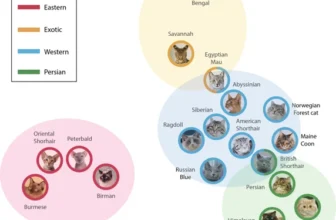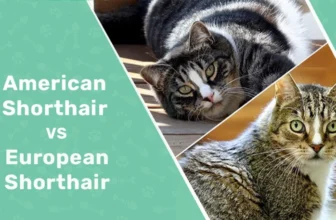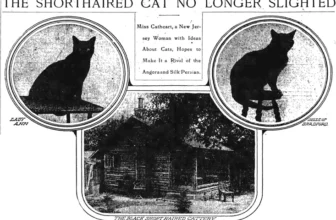The Origins of the American Shorthair
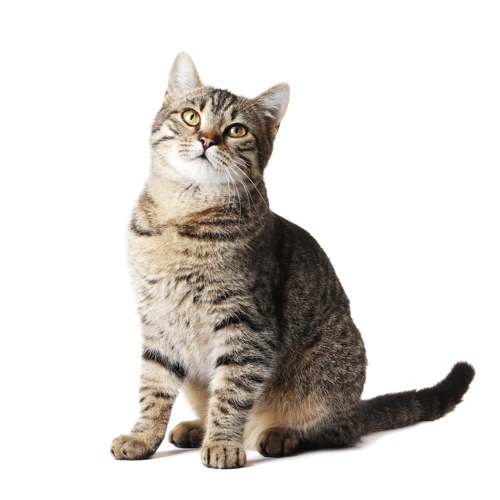
The American Shorthair is a breed of cat with a rich history that spans back to colonial America. While its exact origins are unclear, it is believed that these cats descended from European breeds that were brought over during the colonization period. The American Shorthair was not originally a standardized breed, but rather a working cat that was highly valued for its ability to control rodent populations.
Starting in the 1800s, American cat lovers began to take notice of the distinct characteristics of the American Shorthair. These early fanciers began selectively breeding these cats to create a more uniform appearance and temperament. By the early 1900s, the breed had become popular in cat shows across the country, and in 1906 it was officially recognized as a breed by the Cat Fanciers’ Association (CFA).
Throughout the early years of breed development, the American Shorthair had to contend with competition from imported breeds from Europe, such as the Siamese and Persian. However, the American Shorthair was able to hold its own and has remained a beloved breed in the United States ever since. With its distinct characteristics and strong history, it is no wonder that the American Shorthair has become a staple in American cat breeding and a beloved pet for many families.
The Colonization of America
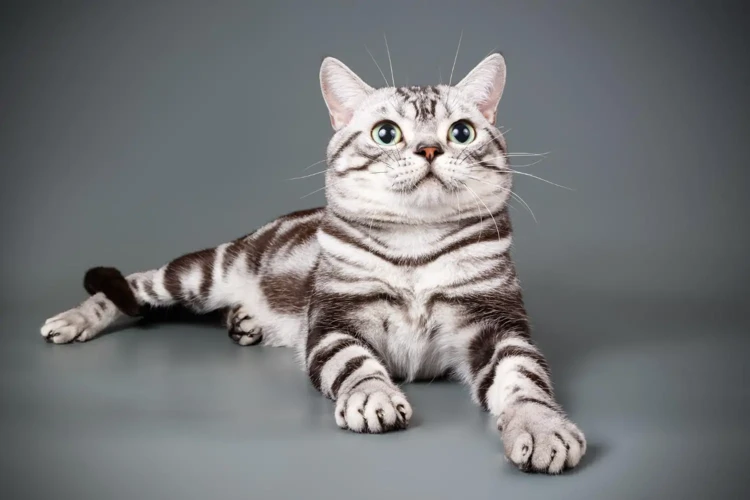
As we delve into the history of the American Shorthair breed, it’s impossible to ignore the role of colonization in its development. The arrival of Europeans to America brought with them not only new people and cultures, but also animals that would eventually shape the future of the continent. From the earliest days of colonizing the New World, cats played an important role in safeguarding the health of the settlers and playing an unwavering role on board ships. Let’s explore how the colonization of America paved the way for the American Shorthair to come into existence.
Early Cats in America
When European colonizers first arrived in America, they brought with them a variety of animals including cats. These early cats, which were primarily used as pest control on ships, were often breeds that are now extinct. Some examples include the European shorthair and the Barbary, both of which were brought over by the Dutch to New Amsterdam (now known as New York City) in the 17th century.
Interestingly, native American cats already existed prior to colonization, with evidence showing that indigenous peoples kept semi-domesticated felines as companions and hunters.
As the colonizers began to settle in America, more cats were brought over to help control rodent populations around homes and farms. Eventually, these cats began to interbreed with the native feline populations, creating a new breed unique to America.
It’s important to note that cats were not always viewed positively in early America. Some colonizers believed they were associated with witchcraft and superstition, leading to the unfortunate persecution and killing of many cats.
Despite these challenges, cats persevered and continued to play an integral role in early American life.
The Role of Cats on Ships
Cats have been an essential part of human society for centuries, and their journey to becoming domesticated animals is both fascinating and complex. The role of cats on ships in colonial America was particularly noteworthy and helped shape the breed that we now know as the American Shorthair.
Table: The Role of Cats on Ships
| Tasks | Description |
|---|---|
| Rodent Control | Cats were often brought on board ships to control the rodent population. These pests were a major problem for sailors as they could transmit disease and damage food supplies. Cats, with their superior hunting instincts, were able to keep these pests in check and ensure that sailors had a steady supply of food. |
| Superstition | Cats were also seen as good luck charms and were believed to bring good fortune to the crew. Sailors would often keep cats on board and treat them with great care and respect. In fact, it was considered bad luck to harm a cat, and sailors who did so were often punished severely. |
| Companionship | Cats were not just valued for their practical uses. They also provided much-needed companionship for sailors during long and lonely journeys. Cats would often curl up on the sailor’s lap or sit beside them as they worked, providing a sense of comfort and affection. |
The presence of cats on ships had a profound influence on their development and evolution. Cats that were able to adapt to the harsh conditions of life at sea and thrive on a diet of rodents were more likely to survive and reproduce. Over time, these cats developed unique physical and behavioral characteristics that set them apart from other breeds.
Cats played a vital role in the colonization of America, particularly on ships. The American Shorthair is an excellent example of how the environment and specific tasks can shape the evolution of a breed. Today, the American Shorthair is a popular breed of cat, and its fascinating history is a testament to the unique relationship between humans and animals.
The Evolution of the American Shorthair
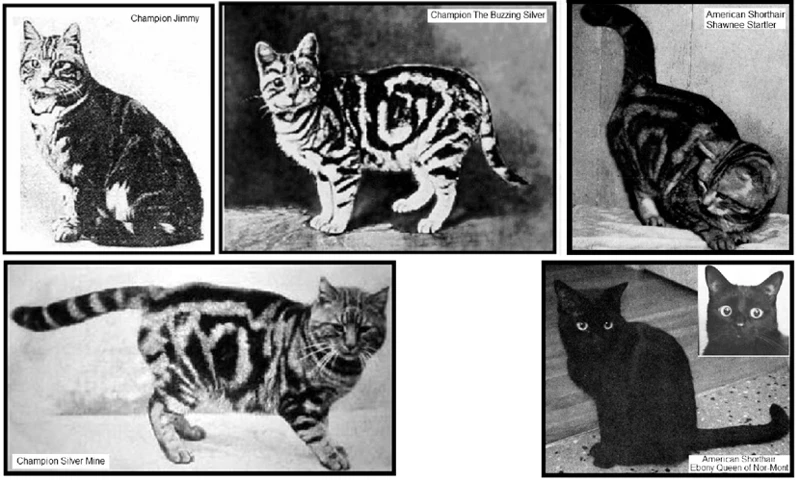
As time passed, the American Shorthair continued to evolve into the beloved breed that we know today. This natural selection process allowed the strongest and most adaptable cats to thrive in their new environment. Through various changes in their physical traits and characteristics, the American Shorthair has become a true icon in the world of feline companionship. Let’s take a closer look at the fascinating developments that transformed these cats into the treasured pets we see today.
Early Breed Development
The early breed development of American Shorthair cats was influenced by the arrival of European settlers to America. As cats were brought over on the ships, they mated with the feral cats that were already present in the colonies. This interbreeding created a new breed with unique traits that were suitable for life in the colonies.
The following are some of the key factors that led to the development of the American Shorthair breed:
- Climate: The harsh climate of the American colonies required cats that were adaptable and resilient.
- Hunting skills: Cats were highly valued for their hunting abilities, as they were essential in controlling rodent populations.
- Temperament: The cats that survived in the colonies were those with a strong survival instinct and a gentle disposition towards people.
Over time, the American Shorthair breed began to take shape. These cats were sturdy, with short, dense fur that adapted well to the changing seasons. They were also known for their desire to hunt, making them valuable companions to farmers and colonists alike. As the breed continued to evolve, new traits began to emerge, such as a variety of coat colors and patterns.
Despite their usefulness in the colonies, the American Shorthair breed wasn’t officially recognized until the 1900s. In 1904, the first American Shorthair was registered at a cat show in New York City. Since that time, the breed has undergone further refinement, resulting in the American Shorthair cats that we know today.
The American Shorthair Today
Today, the American Shorthair is a beloved breed in many households. Here are some interesting facts on the breed’s appearance and temperament:
- Appearance: American Shorthairs have a muscular build, rounded ears, and a short, thick coat that comes in several colors and patterns. The most common coat color is silver with black markings, but they can also have white, brown, or gray coats.
- Size: These cats are medium to large in size, typically weighing between 8-15 pounds.
- Personality: American Shorthairs are known for their calm, friendly, and laid-back personalities. They get along well with children and other pets, and are known for their adaptability in various environments. They are also known for their love of play, but also enjoy quiet moments with their owners.
- Health: This breed is generally healthy and has a lifespan of 15-20 years. However, they can be prone to certain health issues such as obesity and dental problems. It’s important to feed them a balanced diet and schedule regular visits with the veterinarian.
- Popularity: The American Shorthair is ranked as the fifth most popular breed in the United States, according to the Cat Fanciers’ Association. They are a common choice for families due to their friendly demeanor and easy-to-care-for coat.
The American Shorthair continues to be a popular and beloved breed in households across the country. Their friendly personalities, easy-to-care-for coat, and adaptability make them excellent pets for families and individuals alike. If you’re looking for a laid-back feline companion, the American Shorthair may be the perfect fit for you.
The American Shorthair in Popular Culture
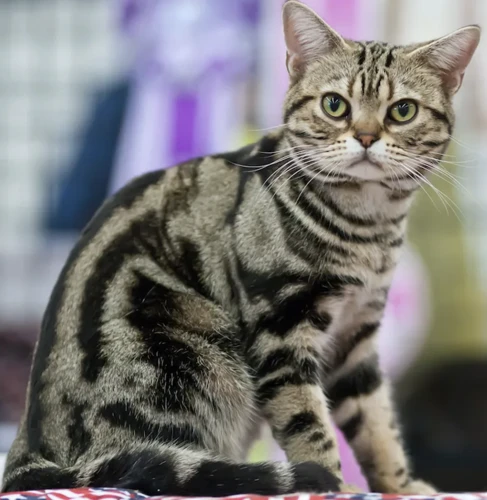
The American Shorthair is a popular breed of cat that has made its way into various forms of popular culture. One notable appearance of the American Shorthair is in the comic strip “Garfield,” where the titular character is depicted as an American Shorthair. This portrayal has helped solidify the breed’s popularity as a household pet.
The American Shorthair has also been featured in a number of films and TV shows. In the hit TV show “Friends,” Joey Tribbiani adopts an American Shorthair named Mrs. Whiskerson, who quickly becomes a fan favorite character. The breed has also made appearances in the films “Homeward Bound: The Incredible Journey” and “The Aristocats.”
In music, the American Shorthair has been the subject of multiple songs. Indie rock band Yo La Tengo released a song titled “The Weakest Part” that features the lyrics “I’m an American shorthair / I’m a product of my birth,” while the band The Get Up Kids have a song called “Tithe” that mentions “A tabby cat and an American shorthair.”
The American Shorthair has even made its way into the world of video games. In the popular game “The Sims 4,” American Shorthair cats are one of the available pet breeds that players can choose to adopt and care for.
The American Shorthair’s appearances in popular culture have helped to spread awareness of the breed and its lovable qualities. They are often depicted as friendly, gentle, and adaptable, making them a beloved companion for many pet owners.
The Future of the American Shorthair
As an iconic American feline breed, the American Shorthair has come a long way since the early days of colonial America, and its future looks bright as well. One of the reasons for this is its popularity among cat lovers; the breed is consistently ranked among the top ten cat breeds by the Cat Fanciers’ Association.
Another positive factor for the future of the American Shorthair is its overall good health. This breed is known for its genetic diversity, which has kept it relatively free from health problems that plague other purebred cats. This diversity also means that the breed is adaptable and can thrive in a variety of living situations, from small apartments to large homes.
The American Shorthair also has a versatile personality that makes it well-suited for different lifestyles and families. They are known for their playfulness, but also for their independent streak, which makes them great for people who work during the day. They are social cats that enjoy the company of their human family members but can also amuse themselves if left alone.
One challenge that the American Shorthair may face in the future is the competition from new and emerging cat breeds. As people’s taste and preferences change, newer breeds will inevitably emerge, which might increase competition for the American Shorthair. However, this breed has stood the test of time and proved its popularity, so it is unlikely to disappear completely.
The American Shorthair has a bright future ahead thanks to its popularity, genetic diversity, and versatile personality. Although the competition from new breeds might challenge its position, this feline will remain a cherished and iconic breed in the American cat world.
Conclusion
After delving into the history of the American Shorthair, it’s clear that this breed holds a lot of significance in both American history and popular culture. From their early origins in colonial America to the role they played on ships, they have truly earned their place as a beloved and iconic cat breed.
The evolution of the American Shorthair is a testament to the power of natural selection and the human desire to create new and unique breeds. Over time, this breed has become more refined and developed, while still maintaining its original characteristics. Today, the American Shorthair is a popular choice for cat owners not only because of its beauty, but also because of its friendly and amiable nature.
Looking to the future, the American Shorthair is sure to maintain its popularity as a beloved pet and cultural icon. As new generations of cat lovers discover this amazing breed, it will continue to hold a special place in our hearts and in American history. Whether you’re a cat person or not, there’s no denying the impact that the American Shorthair has had on our society and our culture.
Overall, the history and evolution of the American Shorthair is a fascinating story that highlights the incredible bond between humans and cats. As we continue to coexist with our feline companions, we can only imagine what the future holds for this iconic and beloved breed.
Frequently Asked Questions
1. How old is the American Shorthair breed?
The American Shorthair breed has been in existence since the Colonial era, making it over 400 years old.
2. What cats did the colonizers bring with them to America?
The colonizers brought European domestic cats with them to America, although the specific breeds are unknown.
3. What role did cats play on ships during the Colonial era?
Cats were brought on ships to control the ship’s rodent population and to protect food stores.
4. How did early breeders develop the American Shorthair breed?
Early breeders selectively bred European domestic cats with desirable characteristics, such as short fur and an independent nature, creating the American Shorthair breed.
5. What is the lifespan of an American Shorthair?
An American Shorthair can live anywhere from 15 to 20 years, with proper care and nutrition.
6. Are American Shorthairs good with children?
American Shorthairs tend to be friendly and sociable, making them great with children. However, it is important to supervise any interactions between children and pets.
7. Do American Shorthairs require a lot of grooming?
The short fur of the American Shorthair requires minimal grooming, consisting of regular brushing and occasional bathing.
8. Are American Shorthairs prone to any health issues?
Like all breeds, American Shorthairs can be prone to certain health issues such as heart disease and obesity, but regular check-ups with a veterinarian can help prevent and treat these problems.
9. Can American Shorthairs be trained?
American Shorthairs are intelligent and trainable, and can learn a variety of behaviors and tricks with consistent and positive reinforcement training.
10. Are American Shorthairs hypoallergenic?
While no cat is completely hypoallergenic, American Shorthairs are known for producing less allergens than other breeds, making them a good choice for those with allergies.





